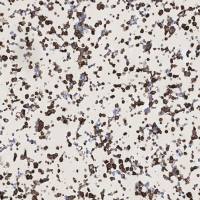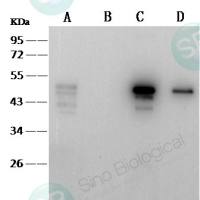从小鼠和人中克隆miRNA实验方法
互联网
Supplementary information to miRNAs cloned from mouse and human
An online clearinghouse for miRNA gene name assignments is provided by the Rfam database of RNA families. The primary purpose of the clearinghouse is to assign unique gene names to distinct miRNAs while maintaining complete confidentiality for unpublished data. To avoid accidental overlap, Rfam will assign a name only after a paper describing the sequence has been accepted for publication. This resource also provides a searchable database of published miRNAs and aims to facilitate the evaluation of candidate sequences according to the above guidelines.
Table 1. Distribution of approximately 21-nt RNAs cloned from mouse tissues and the human Saos-2 and HeLa cell lines.
Table 2. Mouse and human miRNA sequences. The mouse miRNA sequences are shown by default. If differences between mouse and human orthologous sequences are found, the human miRNA sequence is listed on a separate line with H. sap. as prefix. The number of clones identified from the indicated mouse tissues or the human osteoblast sarcoma cell line Saos-2 and cervical cancer derived HeLa cells are presented. Abbreviations: ht, heart; ln, lung; lv, liver; sp, spleen; si, small intestine; co, colon; kd, kidney: sk, skin; ts, testis; ov, ovary; thy, thymus; sc, spinal cord; cx, cortex; cb, cerebellum; mb, midbrain; S, Saos-2; H1, HeLa SS3 (this study and (Lagos-Quintana et al., 2001)); H2, HeLa published by (Mourelatos et al., 2002).
Table 3. Predicted precursor structures of miRNAs, sequence accession numbers, and homology information. RNA secondary structure prediction was performed using mfold RNA folding. The cloned miRNA sequence is underlined. The stem-loop precursor is predicted and not known experimentally. The accession numbers to cloned miRNAs and their predicted homologs are indicated. Color coding is used to indicate the species from which it was originally cloned. Blue, mouse; red, human; black , D. melanogaster; green, C. elegans. Additional HeLa miRNAs reported by Mourelatos et al., 2002 are presented in magenta. It should be noted that database matches or hairpin precursors were not detected for miR-107, miR-109 to miR-117, and miR-119 to miR-121.









